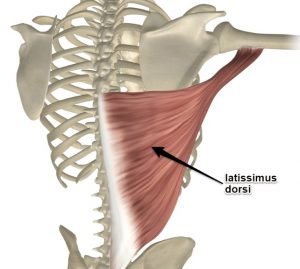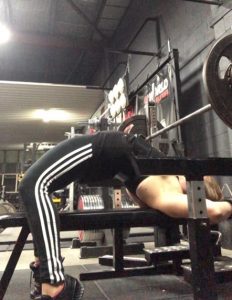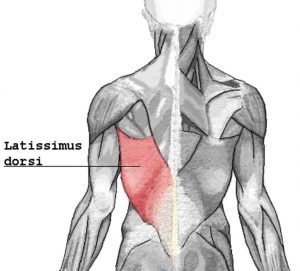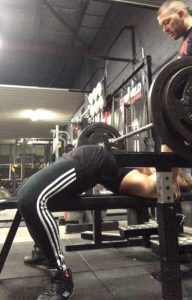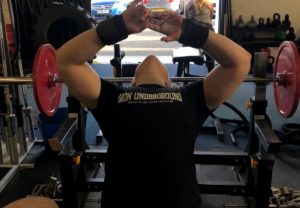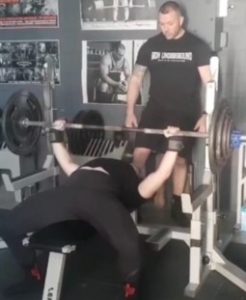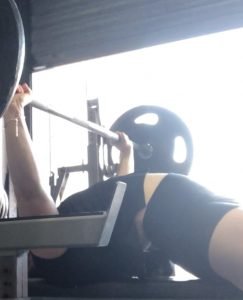Hannah Altman – Rowing to Bench-Press Success
The latissimus dorsi (lats) is the primary muscle that is used for the pulling motion, such as in rows. It acts mainly as a shoulder extender but plays important secondary functions as an internal rotator, adductor, and horizontal extender.
Though these muscles are not the most important part of a bench, they do lay the foundation for a strong bench.
When you are bench-pressing you are in internal rotation. Along with this, you will be in a position of internal rotation, shoulder flexion, shoulder abduction, and horizontal flexion. Strong lats are important when it comes to raw bench particularly for lightweight female lifters.
This is because strong lats will allow you to press against the bench to help grind the bar back up. This being said, lats are even more important when it comes to equipped benching, which we will touch upon another time.
A successful bench press means being able to control the eccentric phase of the bench, which is essentially rowing the bar into the chest.
This is the result of being able to control the movement in your upper back. Being unable to do so is what often keeps a lifter’s bench from progressing, as you need to be able to control this motion. As well, you can’t allow this motion to be so slow that it leaves you fatigued; leaving you unable to press the bar back up.
What Are The Main Muscles Used In The Bench-Press?
With regards to bench-press, the main muscles you will be using are the agonists located in the chest, triceps, and shoulders. When we think about the bench-press these are the muscle groups we often want to focus on building. We often forget about the antagonist which, in bench, is primarily in the upper back and the lats. These are responsible for the downward movement (row) that happens during the bench-press action.
To summarize, using the back to help row the bar into your chest will mean that the body will produce an effect like a spring-loaded device. This is why equip bench, once one learns how to control it, is stronger than raw bench. And, this is because the muscles can throw the weight back up as soon as the muscles release into the press phase. This allows the agonist muscles to unload maximal amounts of torque.
What Accessory Exercises Build A Better Bench-Press?
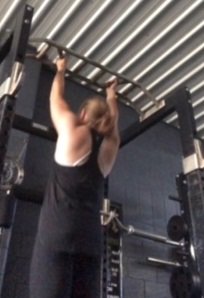 Accessory exercises that build lats are crucial to bench-press past a certain point. Rows are one of the best exercises you can do for your lats. And, when it comes to rows, the stricter the better. Being stricter means that you can’t use the momentum from the body to cheat the movement. For example, one can do pull-ups and chin-ups with no cross fit movements. If those are a bit of a challenge you can use a band for assistance or ask your training partner to help you. You can also jump into them and control them down etc. One can also do landmine rows and lat pulldowns to name a few other appropriate exercises. Another key to success rests with warming up the lats with a band to get them firing before you start training.
Accessory exercises that build lats are crucial to bench-press past a certain point. Rows are one of the best exercises you can do for your lats. And, when it comes to rows, the stricter the better. Being stricter means that you can’t use the momentum from the body to cheat the movement. For example, one can do pull-ups and chin-ups with no cross fit movements. If those are a bit of a challenge you can use a band for assistance or ask your training partner to help you. You can also jump into them and control them down etc. One can also do landmine rows and lat pulldowns to name a few other appropriate exercises. Another key to success rests with warming up the lats with a band to get them firing before you start training.
Remember, the bench-press is more than the press. There are two sides to all stories. Remember the row in your bench, it is not just all about the press.
Next year we will look at the press in bench-press and trust me when I say, it is all about the chest.
About the Author:
Hannah Altman is a qualified exercise scientist BHS| BCOM | MPHIL and Strength Coach Fitrec, a Pilates instructor and Nutrition Coach PN1 Elemental L2, focusing on injury prevention for strength athletes. She is currently studying for her doctorate at Queensland University of Technology.
She holds multiple junior bench-press records, the current one being 95kg and has a top bench-press of 103kg at 69kg body weight. She is ranked in the top 20 in Australia based on Wilks in all three lifts and in Bench-Press.
She is currently coaches out of Iron Underground in Albion, Brisbane and online.
To book a complementary session; to get a 10% discount for rehab, prehab or just performance and to increase your bench, choose from the options below. Contact Hannah on 0452285271.

